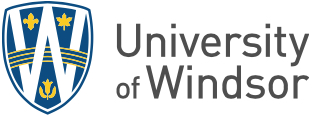Concurrent with the development of these degree programs was the construction of the first two phases of the Physical and Health Education complex on College Avenue. Along with the three-floored main building, playing fields, softball diamonds, and an all-weather track including grandstand were constructed. The main building included laboratory facilities for anatomy, exercise physiology, motor learning, cinematography, electromyography, and electrogoniometry. There were spaces designated for individual research projects, in addition to supporting workshops, an animal laboratory and quarters for animal models such as
rats, monkeys and rabbits.
The well designed classrooms with closed circuit television capability, in addition to the previously listed features made the complex among the best designed and equipped in Canada at the time. The first graduates of the new Honours program convocated in 1969.
With the appointment of nine new faculty members in 1969, the School of Physical and Health Education became only the second "Faculty" in the Commonwealth in this field of study. Formerly administered by the Director reporting to the Dean of Arts and Science, the new unit became more autonomous under the newly appointed Dean, Dr. P.J. Galasso. During the early 1970s the Faculty revised its undergraduate program to include four separate streams:
- Kinesiology
- Applied Kinesiology
- Physical Education
- Health Studies
With the changing foci of the discipline as defined at a meeting of Ontario Physical and Health Education Schools and Facilities in 1971, it became apparent that the pedagogical orientations of most programs were now being seriously challenged to take a more disciplined-oriented focus. Thus, in 1974 the Faculty changed its name from the Faculty of Physical and Health Education to the Faculty of Human Kinetics.
The decreasing number of teaching jobs and the increasing attention to thedisciplinary aspects of the field, led to a consolidation of the four streams down to three in 1981. Further curricular revisions were made throughout the 1980s and 1990s, lowering the Honours degree course requirements from 52 to the current 40 courses. The requirement to take a number of activity courses (practica), was also dropped in 1996. At that time the current 20 course majors in Leisure and Sport Management and Movement Science were developed. The majors were preceded by a two-year core consisting of beginning level courses in all sub-disciplinary areas of Kinesiology. With minor modifications, this is the current undergraduate degree program in Kinesiology that leads to a Bachelor of Human Kinetics (Honours). It is also a program that meets the Kinesiology Accreditation Standards as outlined by the Canadian Council of University Physical Education and Kinesiology Administrators (CCUPEKA). In the spring 2002 Convocation, our 2000th graduate walked across the stage, receiving congratulations from President Ross Paul.
